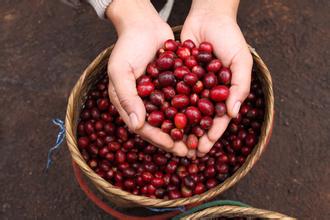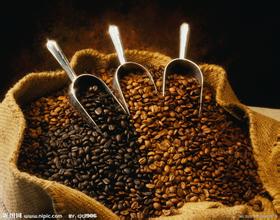Tanzania Coffee Overview Introduction Features
Tanzanian coffee has the excellent pedigree of the Middle Eastern non-washed bean family, bright acidity, rich and irritating flavor. There is no doubt that Kenyan coffee takes the lead in this family, but Tanzania has many advantages that are very similar to those of Kenya. Round beans are often specially selected and expensive, but sometimes they taste like moldy beans, which is not in line with their price. As we all know, garden beans have become a unique flavor of coffee, and sell well in the United States, favored by many roasters. Tanzania is a potential coffee, but sometimes its flavor is not really shown. One reason is that Tanzania does not have the same road infrastructure as Kenya, and coffee in containers ages (or at a high temperature) during transportation. I often drink very good Tanzanian samples, but sometimes I also drink very bad coffee. The problem is that Tanzania only knows that no matter whether the quality is good or bad, they can make a profit from the beans. So what is the motivation for locals to pick and take good care of coffee in time to prevent such defective beans? Blackburn Estate from Ngorogoro has always been an excellent variety and has the highest evaluation in recent memory. The Ruvuma producing area also has a good flavor, which is the southern coffee with the northern gene. The beans of Kibo are bulky and seem to have been cooked at high temperature. The coffee in the south is clean and full, and its mild and unexciting flavor is second only to Kenya. In the past, we have had a small number of caffeine beans from Nkoanekoli and Ngorongoro that represent a step forward compared to other producing areas. So please remember that if you have a Tanzanian spot in front of you now, you have to put aside my mockery because it must be of good quality. Most of the good Tanzanian coffee comes from Mt in the north. The Kilimanjaro, Moshi, Mbeya producing areas and the southern Songera producing areas flow to the Ruvuma River and the Ruvuma basin. Brief level name and definition of TZ level
The difference between AA,A,B and Eforce AFMagTT lies in its weight. In grading screening, the machine is screened according to the number of eyes, and there is also something similar to a hairdryer (Air Blast) that blows out the lighter ones. Some students will ask: why do beans that look the same have a big difference in weight? Physical analysis is: light lack of coffee should have the substance (Cantonese: unexpected). How did this happen? It's completely linked to planting. Such as: root protection, appropriate cutting, covering (high vegetation next to coffee trees), fertilization. It seems like raising a child. Cup test classification

Important Notice :
前街咖啡 FrontStreet Coffee has moved to new addredd:
FrontStreet Coffee Address: 315,Donghua East Road,GuangZhou
Tel:020 38364473
- Prev

Taste and aroma of Rwandan coffee
High-quality coffee from Rwanda has a distinctive taste and aroma. Bourbon coffee grown in Rwanda is one of the original varieties of Arabica coffee. Rwanda Coffee Market: Rwanda (Rwanda) coffee is absolutely high quality in the form of washed Arabica coffee beans. As far as Africa is concerned, its coffee industry is remarkable because
- Next

Introduction to the Origin of mocha Coffee beans
It is smaller and rounder than most coffee beans, which makes mocha beans look like peas. In fact, bean-shaped berry coffee beans (Peaberrybean) are sometimes called mocha beans. The shape of mocha coffee beans is similar to that of Ethiopia's Harrar coffee beans.
Related
- Does Rose Summer choose Blue, Green or Red? Detailed explanation of Rose Summer Coffee plots and Classification in Panamanian Jade Manor
- What is the difference between the origin, producing area, processing plant, cooperative and manor of coffee beans?
- How fine does the espresso powder fit? how to grind the espresso?
- Sca coffee roasting degree color card coffee roasting degree 8 roasting color values what do you mean?
- The practice of lattes: how to make lattes at home
- Introduction to Indonesian Fine Coffee beans-- Java Coffee producing area of Indonesian Arabica Coffee
- How much will the flavor of light and medium roasted rose summer be expressed? What baking level is rose summer suitable for?
- Introduction to the characteristics of washing, sun-drying or wet-planing coffee commonly used in Mantenin, Indonesia
- Price characteristics of Arabica Coffee Bean Starbucks introduction to Manning Coffee Bean Taste producing area Variety Manor
- What is the authentic Yega flavor? What are the flavor characteristics of the really excellent Yejasuffi coffee beans?

